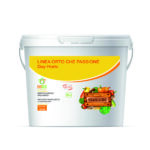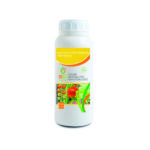
Broccoli: cultivation, fertilisation, and recipes
Broccoli: varieties for our autumn vegetable garden

Broccoli, or cabbage, is among the cruciferous vegetables that should always be a part of Mediterranean diet. Mostly, they are green leafy vegetables. However, there are also a few exceptions of root vegetables such as turnip, horseradish, or radish. Varieties of broccoli include kohlrabi, cauliflower, green cabbage, cabbage, purple cauliflower, black or red cabbage, Savoy cabbage, Romanesco broccoli, and brussels sprouts. Most of those are of Italian origin, but there is also Chinese cabbage from the eastern regions, widely used in south-east Asian cuisine. Many of these varieties are cold-hardy and therefore ideal for the autumn and winter garden.
Benefits for our body
Broccoli is one of the most nutritious vegetables in the world and its nutritional and organoleptic characteristics vary. In general, broccoli is a vegetable rich in minerals, fibre, and also contains vitamin C and vitamins B1 and B2. It also contains sulforaphane, a substance that counteracts the development of cancer cells. Thus, through a correct and healthy diet, it is possible to fight many diseases: cancer, cardiovascular and inflammatory diseases.
When to plant broccoli?
Generally, the ideal time for broccoli planting is the summer, using seedling trays. These help to develop the small seedlings before the transplanting into the soil one month after germination. The correct technique is to place soil in the containers and place 2 or 3 seeds at a shallow depth and then water regularly. The correct technique is to place the soil in the containers and place 2 or 3 seeds at a shallow depth and then water regularly. To encourage the seed germination, it is best to keep them in a fairly warm environment. After about a month and the development of plants, they can go into the ground. Place the seedlings 60-70 cm apart to allow them to develop properly. Once the seedlings have run their course, you can harvest and make your own recipes with broccoli!
How do you make a good vegetable garden?
To grow broccoli and achieve good results, fertilisation is important. So how do you fertilise your vegetable garden? In pre-planting, apply an organic fertiliser such as Day-Horto to the soil. This is a slow-release organic universal fertiliser that gradually releases nutrients. As a result, it prolongs the availability of the main plant nutrients (nitrogen, phosphorus) and micronutrients such as iron, manganese and others. At the same time it also limits nutrient immobilisation phenomena in the soil. It is an ideal product for regenerating poor soils.
Fertilisation after transplanting
After transplanting, however, it is advisable to irrigate by mixing the water with organic liquid fertiliser such as Mister Plants BIO. Thanks to the presence of vitamins and amino acids, it not only promotes the healthy development of all plants, but also ensures abundant fruiting. Mister Plants BIO also improves the organoleptic characteristics of broccoli.
Tips for use broccoli in the kitchen
There are many easy broccoli recipes you can follow to create tasty dishes. They range from broccoli pasta to tasty starters to delicious side dishes. Pan-fried broccoli, for example, is one of the most appetising vegetable side dishes during the winter period. Tasty and just a little spicy, they are an excellent side dish with meat and fish dishes. So, they are a real passe-partout if you have guests over.
How to cook broccoli in a pan?
The process involves parboiling the well-cleaned broccoli or alternatively, steaming them. Either way, they should remain crispy. Fry the garlic with the oil and chilli pepper. When the garlic becomes golden, add add our dish protagonists and sauté for ten minutes with salt to taste. Serve this dish when it is still hot or lukewarm.









